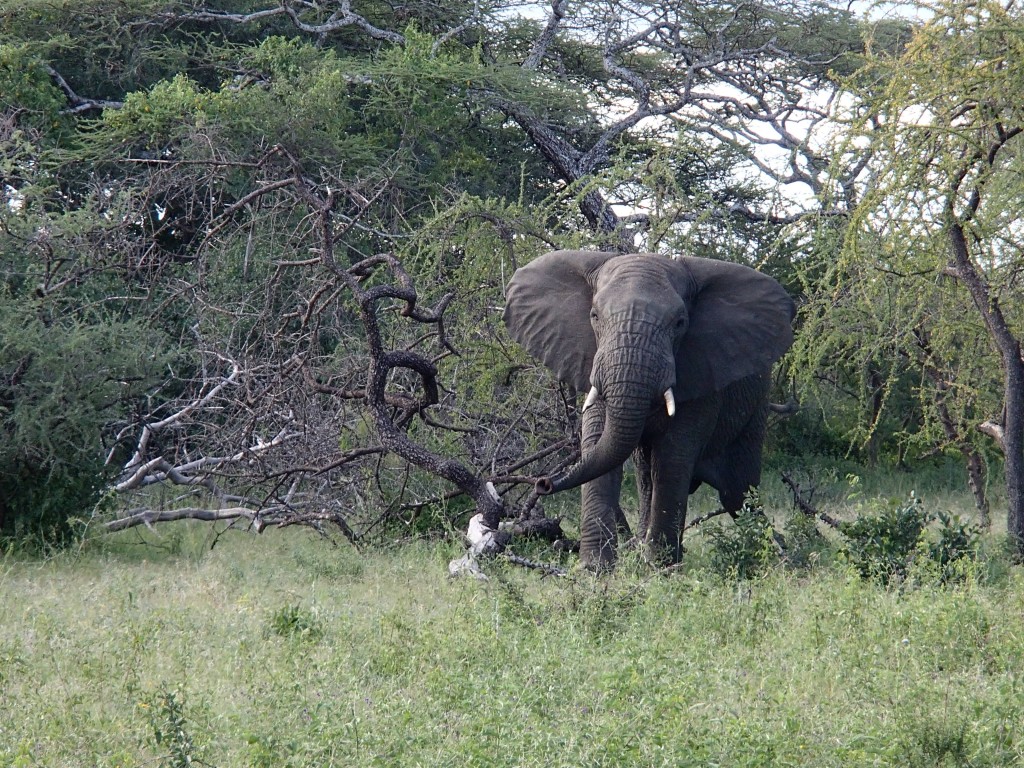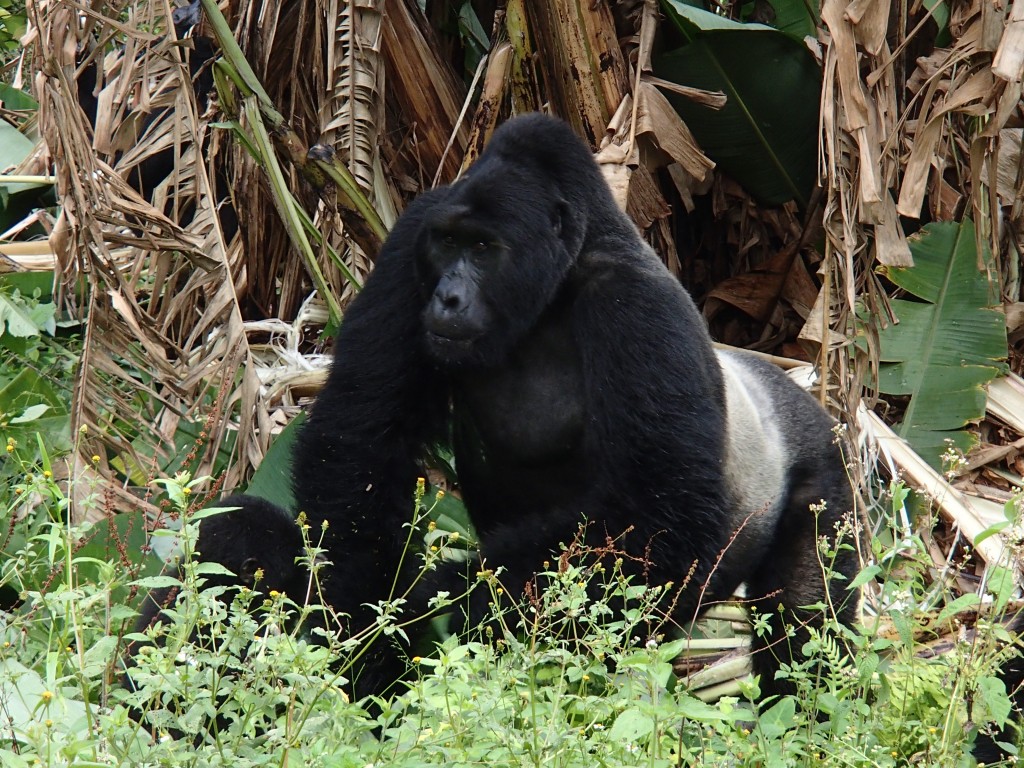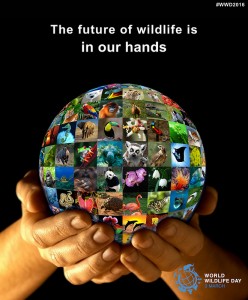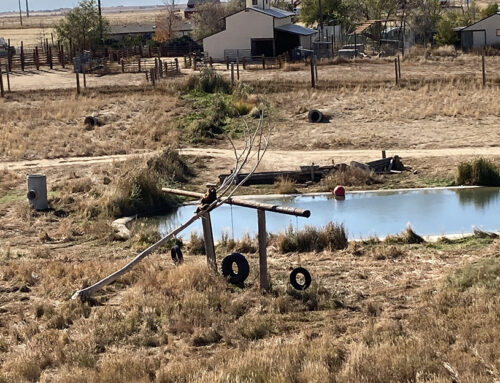The future of wildlife is in our hands
Learn about endangered species, wildlife conservation, and how you can get involved.
In 2013, the United Nations created World Wildlife Day to celebrate and raise awareness of wildlife and plants throughout the world. The theme for 2016 is “the future of wildlife is in our hands” with a focus on African and Asian elephants.
During our world trip the same year, Michael and I had some incredible wildlife experiences including a Serengeti safari, gorilla trek in Uganda, and behind the scenes visit to Uganda Wildlife Education Centre. One of the most memorable was a lesson on elephant behavior and health in Thailand which gave us a great respect for these incredible creatures.
Many species are endangered or threatened due to poaching, habitat loss, and other challenges. It is encouraging to see the commitment, bravery, and innovation that have alleviated some of the risks. But there is still a long way to go. World Wildlife Day is an opportunity for people to learn about wildlife issues and get involved.
Threatened and Endangered Species
The International Union for Conservation of Nature (IUCN) created the Red List of Threatened Species which includes population size and habitat requirements of over 76,000 animal, fungi and plant species. According to IUCN, there are currently over 22,000 species at risk of extinction.
See details about threatened and endangered species:
- World Wildlife Fund Species Directory
- U.S. Fish and Wildlife List of Endangered and Threatened Wildlife and List of Endangered and Threatened Plants
- U.S. Fish and Wildlife Endangered Species U.S. Search Map
The factors that currently pose a high risk to wildlife are habitat loss, human-animal conflict, and poaching.
- Habitat loss – Activities like agriculture and development leave less land for wildlife. See more >
- Human-wildlife conflict – In Africa, wildlife sometimes kill livestock and destroy crops. See more >
- Poaching – According to the United Nations, some of the most critically poached and trafficked animal species are elephants, pangolins, rhinoceros, sharks, and tigers.
See details about threats to wildlife:
- National Wildlife Federation – Threats to wildlife in the United States
- Humane Society of the United States – Issues
Captive Animals
To me, one of the more heartbreaking issues is the mistreatment of captive wild animals, especially elephants. The animals are often used for entertainment or cultural purposes. I recently learned about the abuse of temple elephants in Kerala, India via an upcoming documentary film, Gods in Shackles. Read more about captive wildlife issues >
Efforts to Protect Wildlife
From cross-functional collaboration to high tech applications to low tech innovations, there are many efforts to solve wildlife issues. Below are just a few…
CITES (the Convention on International Trade in Endangered Species of Wild Fauna and Flora) is an agreement between governments worldwide to collaborate to ensure that the international trade of wild animals and plants does not threaten their survival. As of today, there are 181 member countries.
The United States Endangered Species Act focuses on programs to protect threatened and endangered species and habitats in the United States.
The Elephants and Bees Project is one of my favorite innovations to minimize human-wildlife conflict. Elephants don’t like bees. So the project helps communities build beehive fences that keep the elephants away, while creating a new source of income – honey.
Samuel Wasser uses DNA to track animal poachers in Africa. He analyzes seized ivory to identify and map the poaching hot spots and provides the data to authorities.
The Wild Animal Sanctuary in Colorado is a refuge for former captive animals from around the world. It has helped 1,000 animals over the past 35 years and is home to 350 animals.
The Sheldrick Wildlife Trust in Kenya rescues, cares for, and releases orphaned elephants back into the wild.
Take Action - Support Wildlife Conservation
If you are interested in taking action to help save endangered species or support wildlife conservation, here are some ideas.
- See how to get involved in World Wildlife Day
- See five ways you can make a difference for Africa’s wildlife
- Advocate for elephants
- Advocate for animals
- Sign up for the ICUN newsletter
- If you have live in the U.S. and have wildlife issues in your community, learn about humane and non-lethal solutions to address conflicts between people and wildlife
- Be a responsible tourist – do not visit animal attractions that mistreat their animals
- Help fund the upcoming documentary Gods in Shackles
What I am going to do to support wildlife conservation
- Learn – Read a lot more about the current issues and efforts to solve them.
- Share – Share what I’ve learned through future blog posts. Upcoming topics include poaching, elephant conservation, gorilla conservation, responsible tourism, and profiles of non-profits that are making a difference.
- Volunteer – Search for an opportunity to use my skills to have a meaningful impact.
Are you inspired?
What are you going to do to support wildlife? Leave a comment and share your thoughts…








Leave A Comment